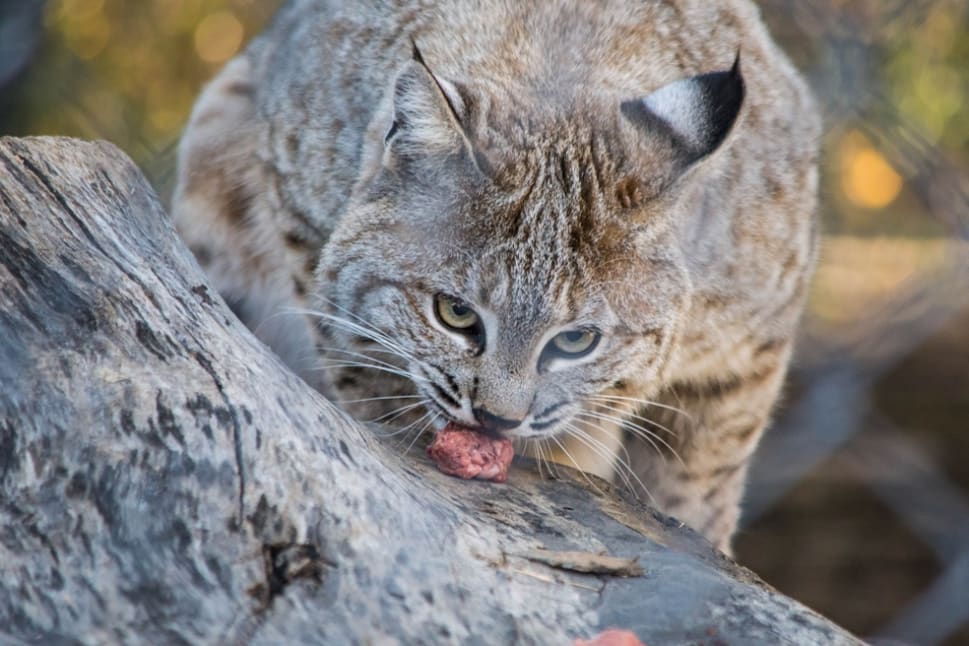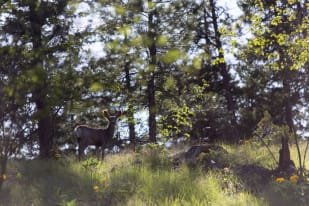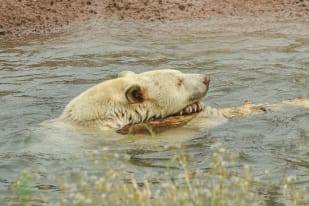Kamloops Wildlife Rehabilitation Services: Giving Wild Lives a Second Chance

The Vital Role of Wildlife Rehabilitation in Kamloops
Kamloops supports a range of ecosystems, from dry grasslands to mountain forests, creating a home for a wide mix of wildlife species. As urban expansion continues, encounters between people and wildlife are becoming more frequent, often resulting in injured, orphaned, or displaced animals that are unable to survive without assistance.
Wildlife rehabilitation services play a crucial role in maintaining ecological balance by rescuing, treating, and releasing wild animals back into their natural environments. These services bridge the gap between human development and nature's need to remain sustainable and thriving. Without intervention, many animals would not survive, impacting local biodiversity and altering ecosystem dynamics in ways that can be difficult to reverse.
Spotlight on the Fawcett Family Wildlife Health Centre at BC Wildlife Park
The Fawcett Family Wildlife Health Centre operates as the only full-service wildlife rehabilitation facility in British Columbia's Southern Interior. Located within the BC Wildlife Park, the centre treats and cares for over 400 animals each year, offering essential medical care to a wide range of species, including birds, mammals, reptiles, and amphibians.
Working closely with the Ministry of Forests, Lands, Natural Resource Operations, and Rural Development, the centre ensures that animals are only released when they meet strict health and survival standards. The rehabilitation process often involves extensive medical treatment, physical therapy, and gradual reintroduction to natural behaviours. Funding remains a challenge, with much of the centre's operations relying on park admissions and public donations to continue their essential work. Every dollar contributed directly supports the day-to-day needs of animals recovering from injury, illness, or abandonment.
Species in Care: Success Stories and Rehabilitation Efforts
Each year, the Fawcett Centre welcomes a wide variety of animals requiring care, from owls and songbirds to porcupines and beavers. Every case reflects a specific situation where professional intervention is critical to the animal's survival, and each success story strengthens the local ecosystems of Kamloops.
One significant case involved Clover, the Kermode bear, who was found orphaned near Terrace, B.C. After several unsuccessful release attempts, Clover became the first Kermode bear in captivity, now serving as a representative for education about conservation efforts. Another notable case saw a wayward eagle from Alaska, monitored by researchers, found in Kamloops and successfully rehabilitated before being released. These stories highlight the importance of expertise, patience, and dedication in wildlife rehabilitation. Although the centre assists many species, it does not have the permits or resources to care for certain large mammals such as bears, cougars, wolves, deer, and moose. These animals require specialized facilities and staff that exceed the park's current capabilities.
Community Engagement and Educational Initiatives
Public education forms a major part of the work done by the BC Wildlife Park. Programs for schools, workshops, and seasonal camps build awareness about local wildlife and the challenges they face, aiming to teach conservation and promote practices that reduce human-wildlife conflict. These initiatives reach thousands of students and residents every year, creating a stronger bond between the community and the natural environment.
Volunteering also plays a vital role, with individuals assisting in feeding, cleaning, and rehabilitation tasks under supervision. Volunteers undergo training to understand the needs and behaviours of different species, gaining valuable insights while contributing meaningfully to conservation work. The park's awareness campaigns, run through social media and local events, focus on promoting responsible interactions with wildlife and offer practical solutions to common problems like improper garbage management, habitat disruption, and the dangers of feeding wild animals.
Collaborations and Broader Conservation Efforts
The BC Wildlife Park partners with institutions like Thompson Rivers University to provide students with hands-on experience in wildlife care and conservation practices. These collaborations offer academic credit opportunities and internships that help prepare future conservationists for careers in wildlife management, research, and environmental education.
The park also works closely with the Burrowing Owl Conservation Society, helping to breed and release burrowing owls back into the wild. By participating in captive breeding and reintroduction efforts, the park contributes to reversing population declines for species at risk. Through these partnerships, the park extends its impact beyond immediate animal care into broader conservation efforts, including habitat restoration, species monitoring, and public education about threatened species in British Columbia.
How the Public Can Support Wildlife Rehabilitation
Financial support remains the most direct and impactful way to help wildlife rehabilitation efforts. Donations contribute to medical supplies, food, enclosures, and veterinary care, all of which are critical to the centre's success. Fundraising campaigns, sponsorship opportunities, and monthly donation programs provide individuals and businesses with ways to make sustained contributions.
The public can also assist by reporting injured or orphaned animals to professionals. In Kamloops, this often means contacting the BC Wildlife Park or the BC SPCA Animal Helpline. Immediate reporting ensures that animals receive care promptly, improving their chances of recovery and successful release. Additionally, engaging in simple, responsible practices like securing garbage bins, building wildlife-friendly yards, and avoiding feeding wild animals can significantly reduce the number of animals needing rehabilitation.
Community members can further support conservation efforts by participating in local clean-up events, attending educational workshops, and advocating for policies that protect natural habitats. Every action, no matter how small, plays a part in creating a safer environment for wildlife.
The Ongoing Commitment to Wildlife Welfare
The Fawcett Family Wildlife Health Centre and the BC Wildlife Park have built a strong record of wildlife rescue, care, and public education. Every animal treated and released strengthens the biodiversity that defines Kamloops and its surrounding regions. Through ongoing medical care, conservation initiatives, and public outreach, these organizations help ensure that wildlife populations remain healthy and resilient.
Long-term success depends on continuous community involvement, public awareness, and financial support. Protecting wildlife in Kamloops is an ongoing responsibility that benefits natural ecosystems and strengthens the connection between communities and the environment. With continued effort and collaboration, the region's rich natural heritage can be preserved for future generations to experience and appreciate.



